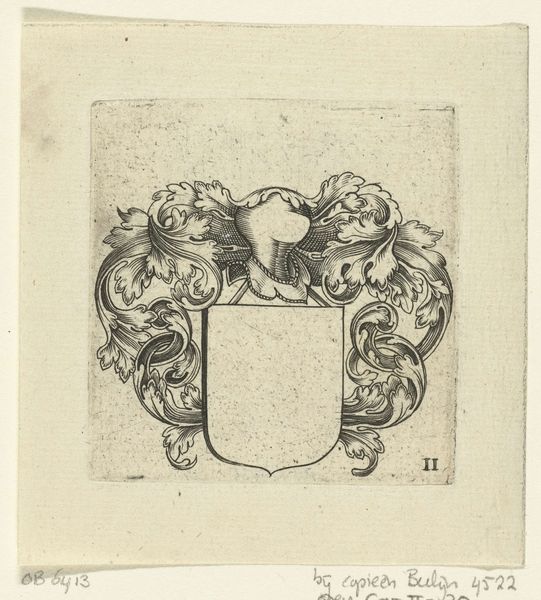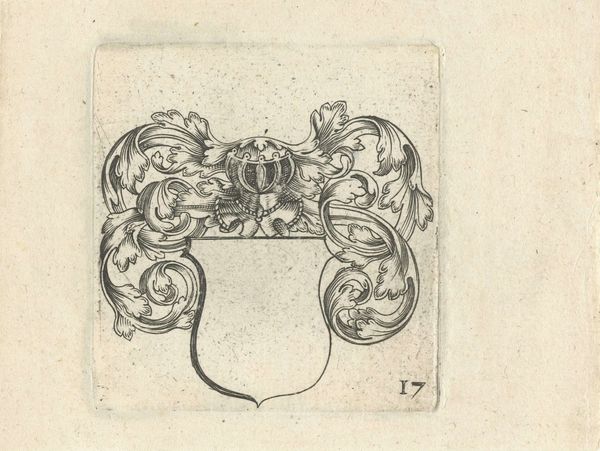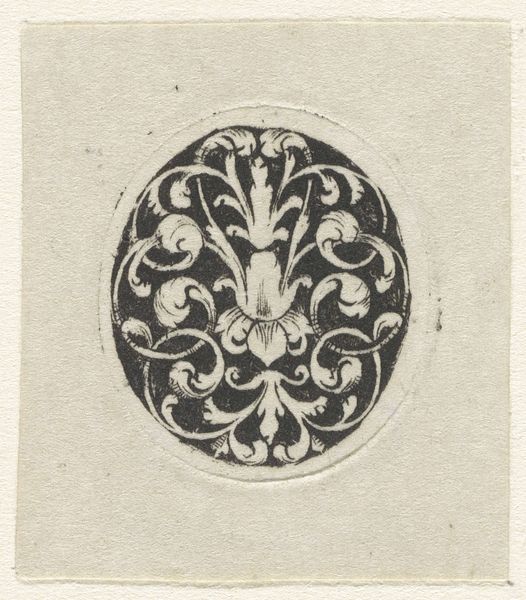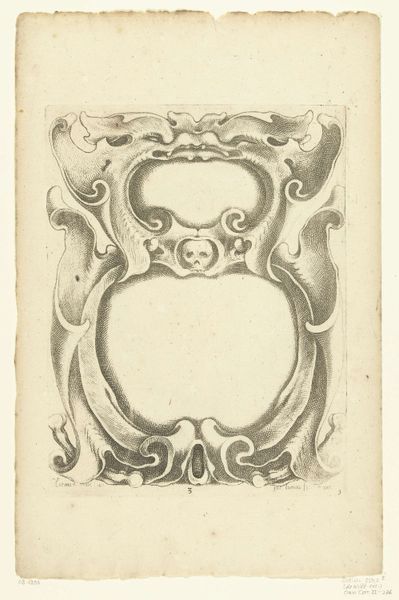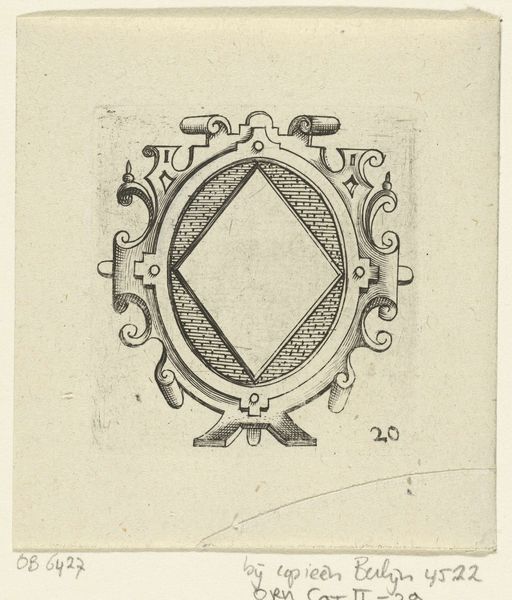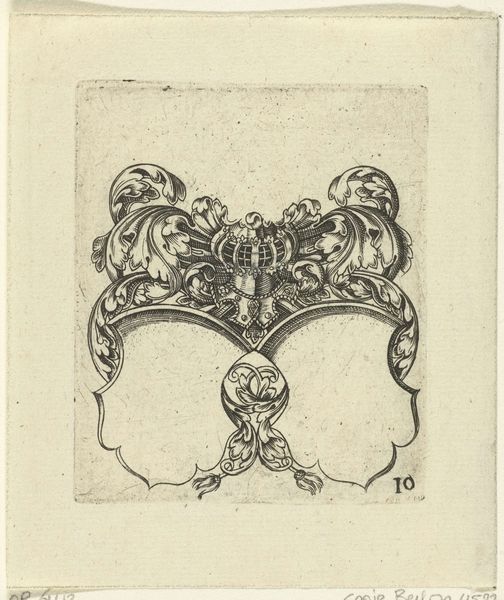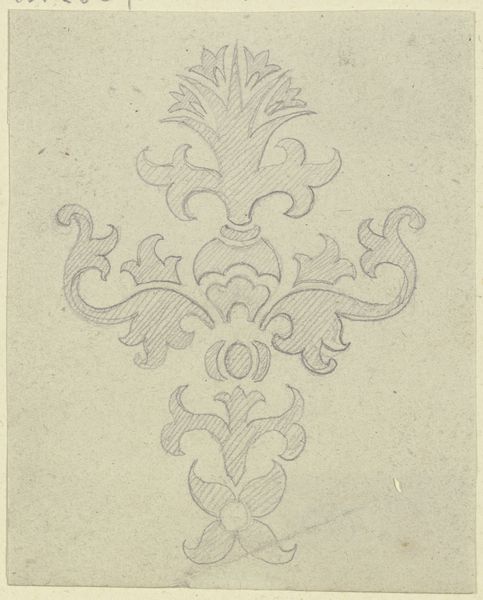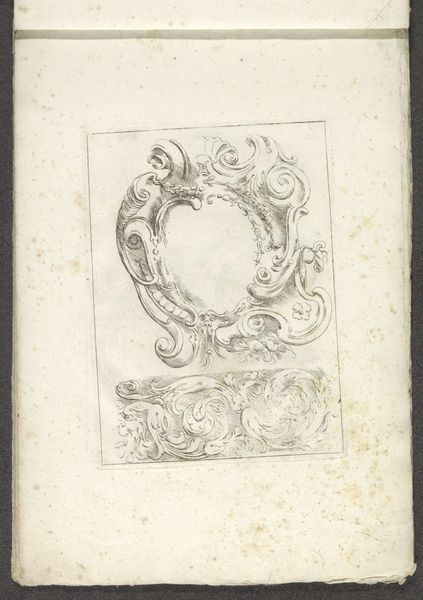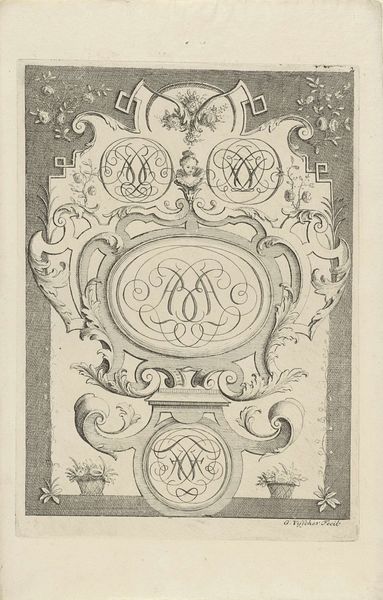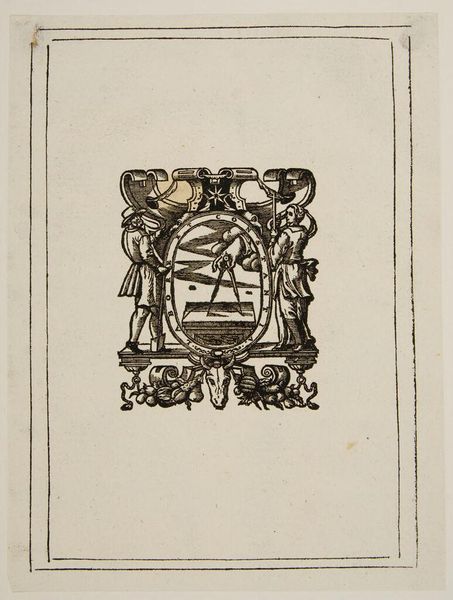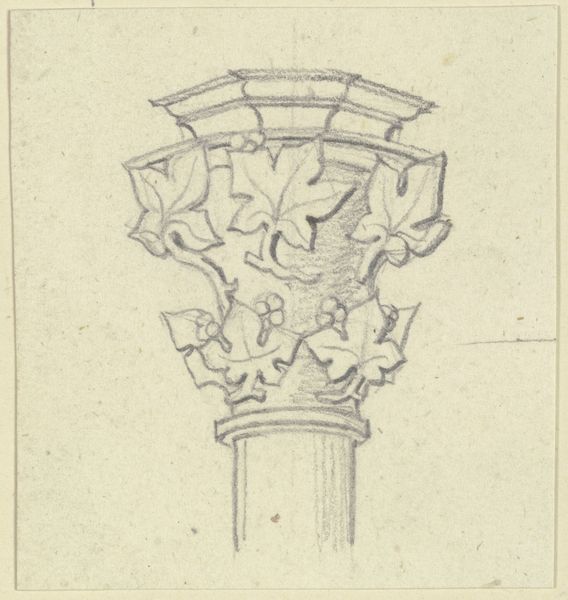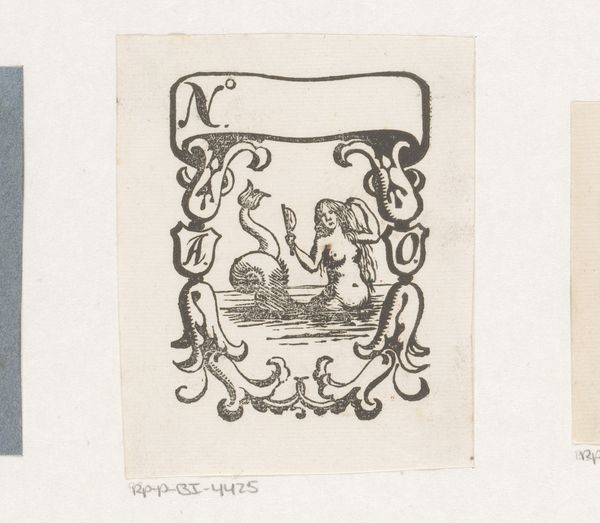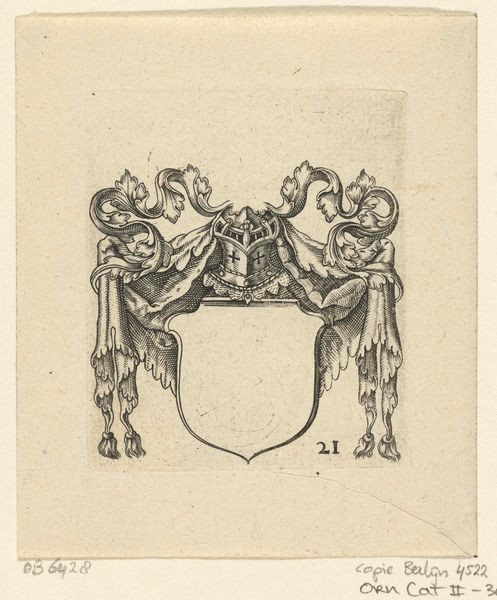
drawing, pencil
#
drawing
#
art-nouveau
#
form
#
geometric
#
pencil
#
line
Dimensions: height 112 mm, width 104 mm
Copyright: Rijks Museum: Open Domain
Gerrit Willem Dijsselhof rendered this pencil drawing, "Lijst met rolwerk in een vierkant", which translates to "Frame with scrollwork in a square," sometime during his lifetime, between 1866 and 1924. Dijsselhof's work exists at the intersection of art nouveau, symbolism, and the decorative arts, reflecting a turn-of-the-century interest in total art environments. Dijsselhof was deeply involved in the aesthetic reform movements of his time, where artists sought to integrate art into everyday life, blurring the boundaries between fine art and applied design. This drawing, with its emphasis on ornamental scrollwork, exemplifies that synthesis. Consider this piece in relation to the broader cultural context of the Netherlands at the time. Dijsselhof lived in a period of significant social and political change, including growing labor movements and calls for social reform. These movements influenced the development of new artistic styles. While the drawing does not explicitly engage with these political issues, its focus on design speaks to the cultural values of the period. Dijsselhof asks us to consider how art can function in relation to its environment.
Comments
No comments
Be the first to comment and join the conversation on the ultimate creative platform.
